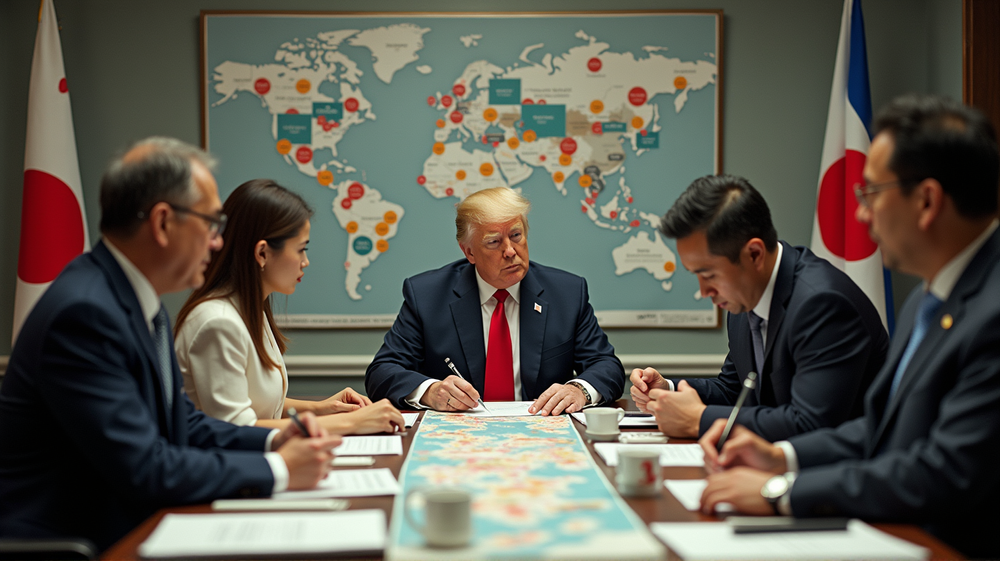In a bold move that appears more show than substance, President Donald Trump recently unveiled a series of bilateral trade agreements with Indonesia, the Philippines, and Japan. The announcements, loaded with impressive figures, nonetheless lack substance regarding execution and implication. As noted by commentators, the landscape remains clouded, with U.S. businesses voicing concern about the potential repercussions.
The Numbers Game
Trump’s declarations came with fixed tariff levels of 19% for Indonesia and the Philippines, while imposing a 15% tariff on imports from Japan. Such numbers, however, share little about the framework of these deals. Promises to eliminate import barriers loom large, though the specifics remain frustratingly elusive. According to NBC News, these tariffs could exacerbate existing economic challenges, dampening spending and affecting domestic profit margins.
A Curious Offer from Japan
Japan’s inclusion in the trade pact potentially represents the most consequential move. Beyond the tariff on imports, Japan has pledged openness to U.S. goods, including autos and agricultural products. However, the nations didn’t stop there; a hefty $500 billion investment was touted as a beacon of bilateral collaboration.
Breaking Down the Investment Announcement
Commerce Secretary Howard Lutnick’s comments on the $500 billion deal brought both intrigue and skepticism. Characterizing it as an open-ended fund for pharmaceuticals, semiconductor manufacturing, or critical mineral mining, Lutnick claimed Japan would function as the financier, while the U.S. claimed majority profits—a proposal raising eyebrows across economic sectors.
Implications for American Businesses
Despite lofty promises, this new era of Trump-led agreements could spell trouble for various sectors across the U.S. Investors and businesses remain cautious. Trump’s tariffs have already strained U.S. companies, as several have issued profit warnings or increased prices in response.
Automotive Industry Concerns
The American automotive industry, in particular, has voiced disapproval. The disparity between tariffs on Japanese imports compared to those from Canada and Mexico only adds to existing burdens. Such disparities may lead to competitive disadvantages for U.S.-based manufacturing.
Investor Reactions
Financial markets, once quick to react to trade announcements, now exhibit more restraint. The initial shock of tariffs under Trump’s administration may have worn off, but investor uncertainty persists. Analysts from Piper Sandler suggest skepticism regarding the durability of these new deals, forecasting further tariff hikes.
Closing Thoughts
As trade dynamics continue to oscillate under political motives, the lasting impact remains unpredictable. With Trump’s strategy of leveraging high-stakes figures against opaque outcomes, businesses brace for a future where uncertainty might be the only constant. The world watches as these developments unfold, hoping for clarity to replace current ambiguity.












